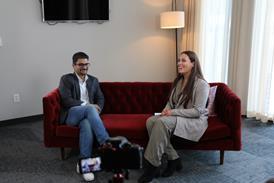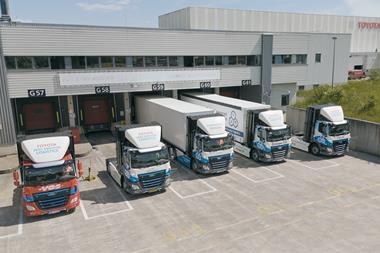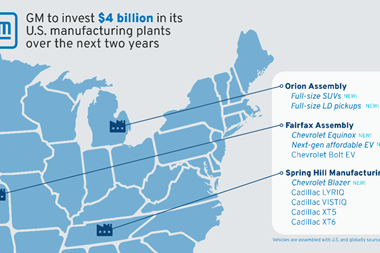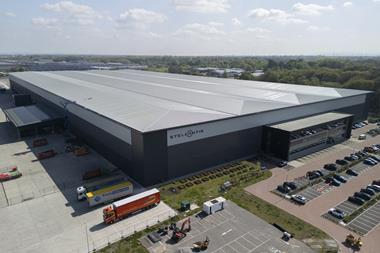 After reinventing much of its vehicle logistics following a severe reduction in output in the wake of the financial crisis, Volkswagen Group’s Spain-based Seat has since seen strong growth in production, exports and sales. That has put even more pressure on space and capacity at its main assembly location in Martorell, Spain.
After reinventing much of its vehicle logistics following a severe reduction in output in the wake of the financial crisis, Volkswagen Group’s Spain-based Seat has since seen strong growth in production, exports and sales. That has put even more pressure on space and capacity at its main assembly location in Martorell, Spain.
The brand’s manager of finished vehicle distribution, Manuel Medina, is looking once again at significant change in the way the carmaker plans, tracks and operates its outbound logistics, including improvements in forecasting to help carriers better plan and utilise their trucking fleets.
What are you looking for, in terms of service developments from carriers, to meet demand over the coming period?“The change in terms of service conditions required until now relates to faster lead times and greater flexibility, maintaining or improving costs and quality levels. Customers increasingly perceive immediacy and this leads our dealers and importers to ask the same of us. But this cannot be a one-sided request from OEMs to LSPs; OEMs should also shape the design of our logistics chains and information management so that LSPs can adapt to our needs without them having to carry the entire burden of adaptation.”
How have your transport suppliers met demand and maintained quality over the last couple of years?“Times of crisis usually encourage imaginative solutions. In the case of Seat, redesigning the logistics chains to tackle the imbalance which occurred between Spain and [the rest of] Europe due to the 2008 crisis enabled us to create a model that still exists; going from ‘one country, one flow’ to a combination of several carriers for several countries, allowing our suppliers to choose the destination that best suited them. This way, not only did we manage to maintain the level of service to our customers, but also to contain costs by aligning ourselves with the interests of LSPs.”
What areas of improvement are you looking to see from your outbound transport providers?“The focus for the next few years is on increasing efficiency in the car distribution chain even more. Specifically, we aim to reduce empty mileage by our suppliers and reduce waiting time between manufacture and transport. These two goals are not separate, but closely linked, especially with the reliability and time window of the forecasts OEMs provide to our suppliers.
[mpu_ad]“At Seat, our mid-term goal is to give our suppliers forecasts five days in advance of the manufacturing date and expected shift time. With this information, suppliers can better plan their fleet, thus improving the empty mileage of their trucks, and also plan the pick-up of cars at the factory almost immediately following manufacture. This aspect relates to the reduction in waiting time between manufacture and transport.”
Is there sufficient capacity in the market now to ensure the timely delivery of your vehicles?“Capacity is not something with a single dimension. The configuration of each logistics set-up has an impact on available market capacity. If the focus is on long-haul distribution from one place to an entire territory, for example, the kind of trucks used have constraints that are different [to those] when distribution is carried out over shorter distances. You need a lot more capacity in the first set-up than in the second, to distribute the same number of cars.
“Equipment has an impact on capacity, too. In an open, uncovered trailer, the possibility of optimisation by LSPs is much higher than in a more rigid, closed trailer. Although the number of cars to transport is the same, the number of trucks needed to transport them is lower in the case of an open set-up compared to a rigid one.”
What are your top priorities when securing a contract with car carriers and how might these change over the next few years?|“Our priority is to create a logistics setup that ensures response capacity to a situation that is never linear and consistent during the three- or five-year period of a contract. This is why we never talk about one contract with one carrier and one flow, but our analysis is global for a set of markets and a set of carriers, including an analysis of their capacity to subcontract if we feel it is necessary.”
What are you doing to support your transport providers in the development of higher quality and efficiency standards?“We have been working very hard for more than 10 years on damage prevention issues and have reached a rate that for several years has remained below 0.8% in the entire logistics chain.
“This prevention is based both on investing in systems that enable us to know the damage that is caused in very close to real time, so we can act immediately, and on implementing safety elements in handling that prevent the most frequent types of damage.
“The tools to detect who is responsible for damages and ensure reimbursement are also an effective investment, as they serve to ensure LSPs always stay on top of quality issues.
“Furthermore, IT tools that generate alerts, and bonus/malus clauses if deadlines are not met, are other monitoring elements that motivate suppliers to achieve a high compliance rate in delivery deadlines.”
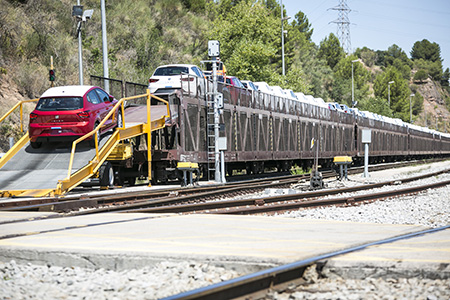
What do you see as the main legal and regulatory issues to address to improve the delivery of vehicles by road?“Regulatory aspects also have an impact on the capacity of available transportation. At Seat, we closely monitor the difference in measurements of authorised trucks in each EU country. We are not referring so much to length, but rather to load height, and in this sense we support a height of 4.5 metres across the EU [trucks in Spain are currently restricted in height to 4.0 metres].
“We understand the reasons referring to the height of existing bridges and tunnels in each country. However, we feel a general limitation should not be considered for an entire country when in that same territory there are several routes that would accommodate greater height and increase the transport capacity of the existing fleet in Europe.”
[related_topics align="right" border="yes"]Are you working with your service providers on IT systems for accurate tracking of vehicles at the storage yards and throughout the delivery process?“Of course, but at Seat we probably understand the delivery process a bit differently than other brands. We believe that, without compromising on tracking cars from the time they leave the factory until they are delivered to the intended dealer or importer, the actions for reducing car pick-up times at the factory have a much greater impact.
“In the first situation, tracking cars from the time they leave the factory to their destination, the tracking action usually only involves taking action in isolated cases. In the second, by speeding up the departure from the factory, the impact is 100% on manufactured cars, and a real-time reduction is achieved from car manufacture to delivery.”





